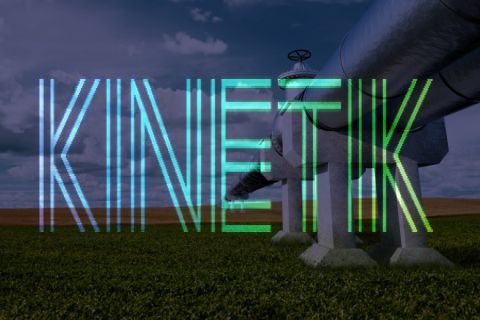In recent years, advances in technology and the increased availability of high-performance fibers and fabrics have combined to boost interest in the use of composite materials for pipeline rehabilitation. In today’s economy, more pipeline owners and operators with damaged,
corroded or compromised sections of line are turning to composite wrap as a cost-effective and flexible alternative to repair clamps, welded repair sleeves or pipeline replacement.
In some cases, the use of composite wrap even facilitates repairs that would otherwise be difficult or impossible. After all, corrosion or damage doesn’t occur only on straight, round pipe. For example, a slight field bend or out-of-round section of pipeline can be difficult to repair using a standard half-sole steel sleeve. On the other hand, composite wraps are an excellent repair alternative in such cases. Any geometry or transition can be wrapped to achieve excellent contact around the entire section of pipe.
Composite categories
Generally speaking, there are three main categories of composite wrap currently on the market. The first category is wet-apply carbon wrap, which, as the name implies, involves the wet application of carbon fiber fabric onto a section of pipe. This wetted fabric cures to form a hardened sleeve, not unlike a plaster cast applied
to a broken arm.
The second category of wraps is very similar, except these wraps rely on fiberglass rather than carbon fabric for structure and reinforcement. As with the wet-apply carbon wraps, the fiberglass wraps are applied wet and allowed to cure to achieve strength.
The third category is preformed composites, which are not applied wet to the pipe. Rather, they come already shaped and molded and need only be fitted to the line. The layers of a preformed composite are cured at the factory and an adhesive is used to secure the layers to each other.
Temporary or permanent
Two terms that appear repeatedly in pipeline repair codes and specifications are “temporary” and “permanent.” Unfortu-nately, there are few or no indications of how long “permanent” is or how short “temporary” is. Permanent usually indicates the repair is valid without further action or monitoring by the operator.
By contrast, a temporary repair provides a short-term solution until a permanent repair or replacement can be made. Temporary repairs are used when they
are available immediately and permanent repairs may take some time to mobilize. When a maintenance shutdown is scheduled within a defined time frame, a temporary repair can be made to provide safe pipeline operation until the planned shutdown occurs and a permanent repair or replacement can be made.
Repairs made using composite wrap can be considered either permanent or temporary, depending upon the code allowances and the type of defect being repaired. External repairs to general corrosion are considered permanent because the corrosion mechanism has been stopped by the application of the composite system. Internal repairs, while providing structural integrity to the pipeline, are considered temporary because the action causing the internal corrosion will continue.
In 2006, two important specifications were released to define the parameters of composite repairs: ASME Post-Construction Code 2 and ISO 24817. Similar in content, these two codes provide guidelines on how to evaluate the performance characteristics of composite repairs. The CFR 192 and 195, along with the ASME B31 series of codes, are intended to guide pipeline operators during selection of acceptable repair methods. Earlier repair methods used formulas based upon the composite’s strength. The advanced formulas consider the strain values of the composite and provide a robust long-term composite solution.
Performance and flexibility
A composite system applied wet to the pipe will cure through the thickness to form a solid structure. A good example of a wet-apply carbon fabric composite wrap system gaining wide global acceptance as a solution for corrosion and other pipeline defects is RES-Q Composite Wrap from T.D. Williamson, Inc. (TDW). While TDW has been repairing pressurized pipelines and piping systems for decades, the relatively recent development and introduction of RES-Q Composite Wrap now provides a new tool to help operators maintain their pipelines at full pressure.
The TDW system was developed with optimum safety and performance in mind, and in that order. The thermoset resins and hardeners contain no volatile solvents and do not shrink or expand during the curing process. While there are hazardous additives available to speed the curing process, TDW places a higher value on the safety of the installer over the hour that could be saved by using irritating chemicals. Once the repair is complete, the residual mixed components can be discarded as standard household refuse.
TDW’s composite wrap combines the high performance of carbon fibers with the flexibility of a wet-applied system. The combination of a unique blend of epoxy resins and a proprietary carbon fabric can result in a repaired section of pipe that is actually stronger than the original pipe. Where rigid composite bands and even steel sleeves struggle during applications onto dents and near welds, this wet-apply composite wrap system requires less effort and can provide a stronger repair.
Versatile by design
The RES-Q Composite Wrap system was designed to be used on a variety of pipe conditions. These conditions include both buried and above-ground pipelines; pipelines that cross rivers and pipelines adjacent to bridges and overpasses; and also piping systems within refineries, process plants, and hydrocarbon processing facilities.
It can also be used for instances where the pipe wall has become thin and may produce a through-wall defect. Operating temperatures of the pipeline can range up to 271°F (132°C). However, the system, using a thermoset epoxy, needs a minimum temperature of 40°F (4°C) to cure.
A wide variety of pipeline materials can be repaired with RES-Q Composite Wrap, including liquid, gas, steel, plastic, fiberglass and cast irons. Pipeline products can range from water to hydrocarbons, natural gas to flare lines, high temperature and low temperature. The specific wrap system to be used is selected based upon the type of defect, type of pipeline product and the design temperature.
For through-wall defects, the life of the repair will depend on the cured composite’s chemical resistance to the pipeline product. Products like water and steam, hydrocarbons and natural gas have excellent chemical resistance, while others like monoethanolamine (MEA) can affect the life of the repair.
Assessment and solution
There are many ways to discover a pipeline defect. Some pipeline operators use inline inspection tools or pigs to gather data on sections of pipeline. This data is analyzed and a report is provided identifying the defect sizes and their locations. Sometimes, due to third-party damage, the location of the defect is known and direct assessment is needed to document it.
Once the data concerning the pipeline and the defect is documented, calculations are made to determine the amount of composite material needed for the repair. The formulas from the ASME and ISO standards can be used along with the physical performance data provided by the composite’s manufacturer. To simplify this process, TDW has developed RES-Q ProCalc software to assist pipeline operators in determining the amount of composite material needed for a repair.
The software takes the data collected from the assessment and provides the required thickness of the repair and the repair length. Once the repair thickness is determined, the software creates an engineering report documenting the pipeline conditions and the recommended repair. The report can be printed or saved electronically, or both.
Some composites systems are sold in bulk form and require measuring and cutting in the field. Others provide a dedicated number of repair layers regardless of the pipeline conditions. The RES-Q System is an engineered solution to maximize the performance of the repair, and to keep the cost and labor to a minimum. Only the required amount of composite material is used for each repair, matching the defect to the correct number of layers. This reduces cost for the repair product and saves time during field installation. The wrap kits are pre-measured and the fabrics are pre-cut for the application. The kit contains all the material necessary to install the composite repair; no additional tools are needed.
Application procedures
Successful application of composite wrap begins with proper pipeline surface preparation. The key to a successful composite repair application is the proper anchor pattern on the pipeline surface. It is always a good practice to document the surface profile of the pipeline prior to the installation of a composite system. This practice of measuring and recording the surface roughness will reinforce the importance of good surface preparation and provide a stop-gate to halt the repair until conditions are corrected.
In the case of RES-Q Composite Wrap, external defects and weld seams are prepared using pipeline putty. This formulation bonds to both the pipeline and the layers of epoxy-infused fabric wrapped over the putty, providing excellent load transfer from the carrier pipeline to the composite repair.
In response to the need for a final top coat – a corrosion-resistant coating typically applied by the pipeline operators – engineers at TDW incorporated a peel ply fabric into the wrap system. This peel ply integrates a rough finish into the final composite product, effectively eliminating the need to wait until the composite cures and additional labor to prepare the composite’s surface.
Looking forward
In today’s industry, pipeline operators are required to provide more maintenance and repairs on large sections of pipeline, and they must do so with limited funding and resources. Cut-outs and welded repairs will continue to be used, but such options may not be necessary for every situation. With advances in technology and materials, composite wrap is poised to take its place alongside these other options for pipeline repair. With composite repair as part of a company’s rehabilitation options, more pipeline rehabilitation can be completed in less time than with conventional welded sleeves or cut-outs, increasing efficiency and saving money in the process. n
The author
Alan Morton began his career with T.D. Williamson in 1999 as a Project Engineer with the Research and Development?group. He is currently the Rehabilitation Solutions Manager and is involved with special?repair?solutions for North America and international pipelines. He is a member of NACE and ASME and is a registered Professional Engineer.
Editor’s Note: RES-Q® is a registered trademark of T.D. Williamson, Inc. ProCalc™ is a trademark of T.D. Williamson, Inc.
Recommended Reading
Permian M&A: Oxy Shops Delaware Assets, Family Oil Cos. Stand Out
2024-05-10 - As operators scour the Permian Basin for M&A opportunities, they’re keeping an eye on a tepid divestiture market. Family-owned oil companies also stand out among the pack of private inventory holders remaining in the Permian, according to Enverus Intelligence Research.
GeoPark, Vitol Sign Offtake Deal for Llanos 34 Block
2024-05-10 - Under the agreement, GeoPark will sell and deliver to Vitol a minimum of 20,000 bbl/d of oil from the Llanos 34 Block in Colombia, which GeoPark holds 45% working interest.
Magnolia Bolts-on 27,000 Acres in South Texas’ Giddings Field
2024-05-09 - Magnolia Oil & Gas said it paid $125 million to a private operator to acquire the acreage, which has minimal production.
Tetra Tech Acquires Convergence Controls & Engineering
2024-05-09 - Tetra Tech is acquiring Convergence Controls & Engineering to expand its digital water and energy offerings.
Kinetik Launches Delaware Basin M&A Valued at $1.3B
2024-05-09 - Kinetik Holdings will buy Durango Permian infrastructure for $765 million, excluding contingency payments, and sell its interests in the Gulf Coast Express pipeline to AcrLight Capital Partners for $540 million.





